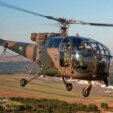To me, most RA aircraft airframes can handle around 3g, in a steep turn (60 deg) you need to maintain a constant 2g once established in the turn, to maintain a level turn. So, 3g is quite a lot. Turbulence would have to be pretty severe to exceed that. Negative g airframe limits an RA aircraft are less, but again, weight acting in the same direction as a negative load on the wing in level flight, seems to reduce this stress in turbulence.
Slowing down to your rough air penetration speed, top of the white arc, will put you into the stall boundary area of the Vg diagram or structural envelope, which means in severe turbulence your aircraft would stall, if hit by a big updraft. The wing would stall, before it reaches it’s structural limit. Stall is not great….but I would choose it over losing a wing!
I big threat in turbulence is ending up in an upset or unusual attitude. Recovery from that, could cause an over stress. It’s unfortunate, most people when badly frightened, will instinctively pull back on a stick, you might not even realise you are, because pulling back has always meant “up”. If inverted, this will lead to looping it out, very likely to exceed VNE here. I was taught for UA recovery, power down, roll wings level, then pitch.
An significant upset on final approach is clearly about as bad as it gets. This Saturday, I was getting a few good kicks from turbulence on final. I pushed my approach speed up 5Kts and was ready for a go around. Close to the ground, the air has no room to move vertically, so turb reduces, but you are also probably dealing with a X-wind! I think all pilots are aware of wake turbulence and how bad that can be, close to the ground. Those if us who may encounter the odd Q-Link Dash 8, beware. Interesting in that vortices only form when lift is produced, I try to firstly delay…but, stay above his flight path, take off before his lift off point and land beyond his touchdown point.


